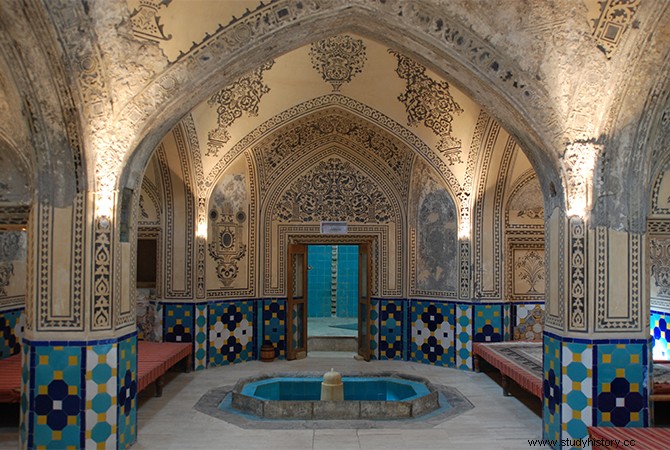
One of the oldest traditions to survive until now, Turkish baths are basically bathhouses mostly associated with Islamic regions. Spread all over the world, the hammam functions not only as a place of purification, but also as social centers where people can meet and greet. Here I will explore the history and significance of the hammam in the world.
History:Ancient Time to the Contemporary
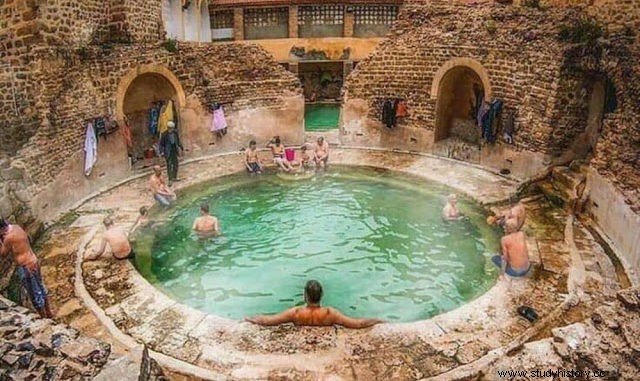
The origins of the hammam go back to the days of the Roman Empire and the Hellenistic era. For the Greeks, cleaning and washing were an important routine, so the local bathhouses saw a steady stream of residents during the week. When the Arab Muslims took over the region in the 7th and 8th centuries, the local bathhouses proved extremely popular among them as well. This was mostly because their religion required them to perform ablutions before prayer and Islam placed a general emphasis on both physical and spiritual purity.
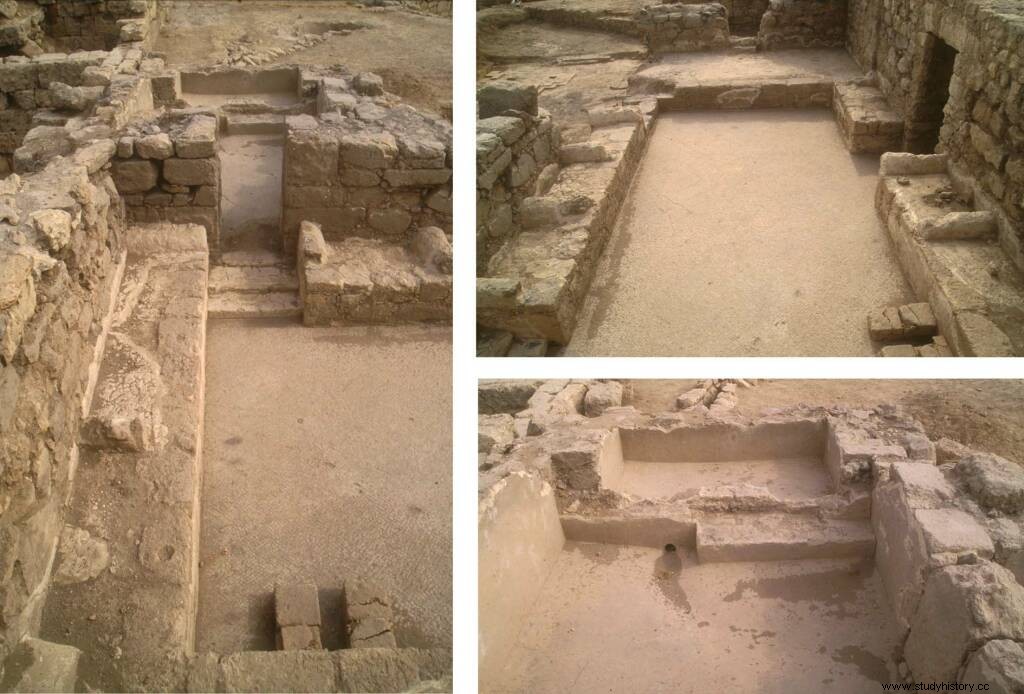
The earliest known hammams in the Islamic world were built during the Umayyad Caliphate (661-750) in Syria. These hammams were part of the castle and palaces of the desert. After this period, large parts of the Muslim world adopted the use of the hammam, and they appeared widely. Archaeological records show that the hammams came to be in Volubilis, Morocco, Cordoba and other al-Andalus cities during the 7th and 8th centuries. Two centuries later, bathhouses and hot springs were used in Iran, not only for purification but also for therapeutic purposes.
In the 11th century the Byzantine Empire fell under Seljuk rule, and until the 15th century there was war, competition and then finally peace, trade and alliance. Throughout these centuries, there was an enormous mixture of Islamic, Persian, Eastern Roman, and Turkish cultures, and each of these cultures had a great influence on each other. Hammam was built not only as a bathhouse, but also as a place for socializing. When the Ottomans later came to the region, they became protectors of the hammams. Given its relevance as a social center, a hammam was built in all the cities of the Asian, African and European territories of the Ottoman Empire. And then the Ottoman rulers get the credit for introducing the hammam in Eastern and Central Europe. Many of these old bathing houses exist today - some are under restoration while others are in disrepair. Turkish bathhouses are found in Hungary and Greece, while many Ottoman bathhouses are located in Edirne and Bursa, Eastern Europe and Anatolia. In Constantinople, the hammams increased in number as well as spectacular designs due to the royal patrons and access to water.
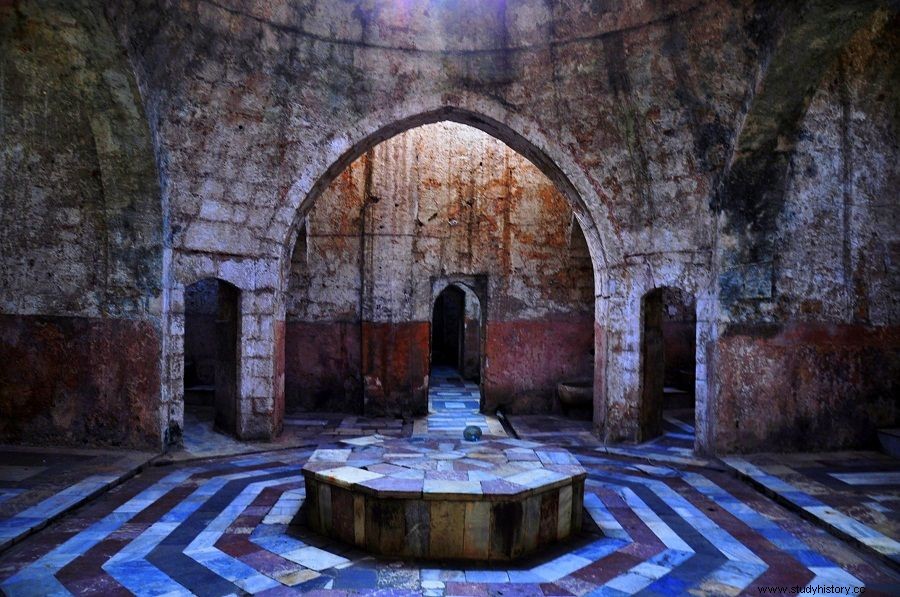
The Greek inhabitants of the cities maintained the Eastern Roman bathing culture. Zeuxippo's bath is a great example. The Ottoman architects drew inspiration from the earlier Byzantine designers and built the hammam with well-balanced design, regularity of arrangement and greater symmetry. Some of the oldest hammams, which resemble monuments, are the Tahtakale Hamam (believed to have been built just after 1454), the Mahmut Pasha Hamam (built in 1466) and the Bayezid II Hamam (built between 1500 and 1507). The 16th-century Ottoman architect Mimar Sinan designed some of the monumental bathhouses, such as Çemberlitaş Hamam, Süleymaniye Hamam (in the complex of the Süleymaniye Mosque) and Haseki Hürrem Sultan Hamam. The design of these hammams also served as inspiration for the later bathhouses that appeared under Ottoman rule.
In 1768, Sultan Mustafa III (ruler of the Ottoman Empire from 1757 to 1774) ordered that the construction of a new public hammam be stopped. This led to a significant increase in the number of private bathhouses built by the city's rich and elite class. Most of these bathhouses appeared in the suburbs of the Bosphorus, where the wealthy had their comfort homes built. In Iran, many of the spectacular hammams that have survived to date from the Safavid period (16th to 18th century), and these can be seen dot the historic city of Isfahan. As Muslim rule expanded into the Indian subcontinent, the hammam emerged and many of those who survive today are of Mughal architecture (16th to 19th century).
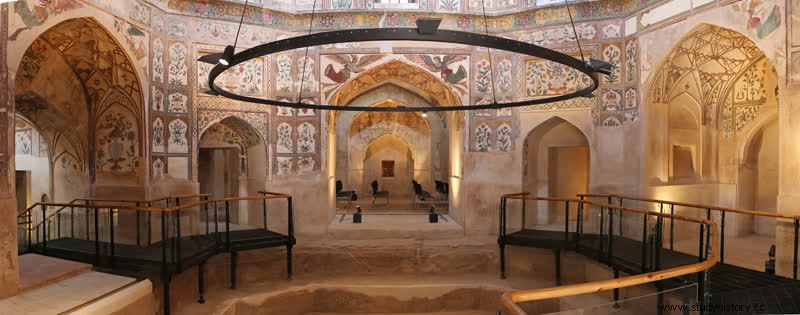
Until the 1920s, public bathhouses were an important part of city life in the Muslim world. Throughout this period, private homes enabled indoor plumbing work, and they built private Turkish hammams, which led many to question the necessity and hygiene of public hammams. So the number and use of public hammams has declined in many cultures. The hammams were either demolished, abandoned or turned into other cultural arenas or commercial buildings. In Istanbul and Macedonia, many were turned into art galleries or museums.
The construction of private bathhouses in Turkey led to the neglect of public historic bathhouses. While many remained abandoned or converted, the neglected ones were later renovated and opened to both locals and tourists. In Morocco, the most popular and historic cities, such as Marrakesh and Fes, continued to operate their hammams. The hammams in these cities were especially useful to the poor. In many other regions, however, hammams have become obsolete. In Iran, historic cities such as Isfahan continued to operate their Turkish baths for not only purification but also for religious functions. Overall, there was a decline in the number of bathhouses, many of which were converted into tea houses and restaurants.
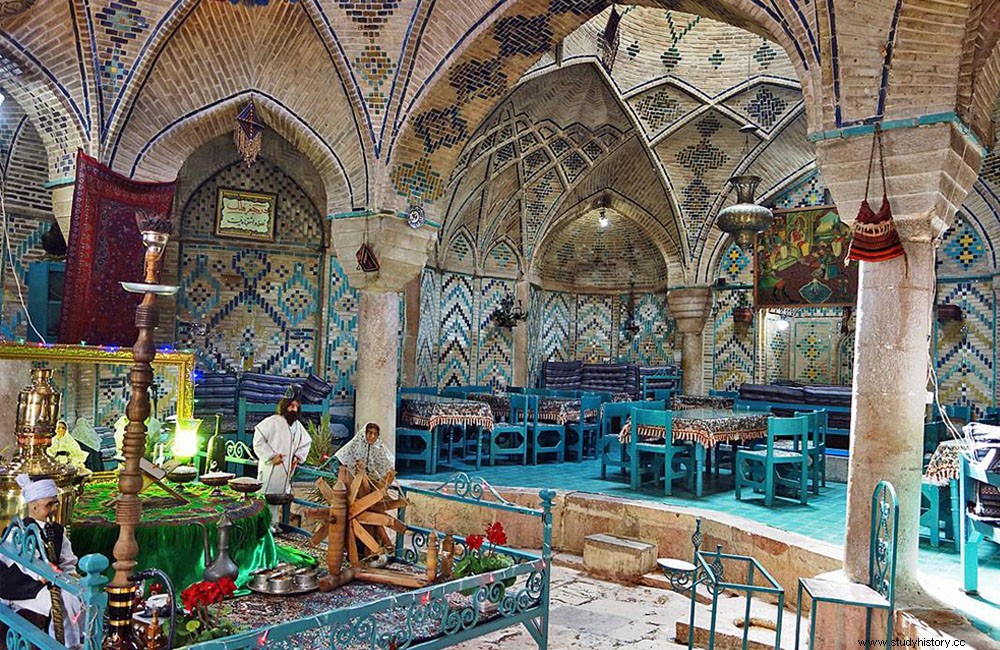
In the Syrian city of Damascus, only 13 hammams worked when a census was taken in 2004. Cairo, the bustling city of Egypt, had 77 hammams in operation in the early 19th century, only to go down to only 8 in the early 21st. century. The former European territories of the Ottoman Empire, like the Balkans and Greece, saw many of their hammams neglected and abolished. But in recent times, these have been renovated and turned into cultural centers and historical monuments.
The general design of the hammam
Designing and building a Turkish bath, it combines the structure and functionality of the early Roman baths with Islamic traditions, such as steam baths, purification rituals and respect for water. Other than building public bathhouses like the Greeks and Romans, Islamic hammams were often built as extensions of mosques. The mosques themselves were part of larger complexes that served as both worship centers and community centers.
While variations in design emerged across regions and cultures, it was a general setup for all hammams. The architectural principles for the bathhouses were quite similar. The design was such that it was a regular sequence of rooms that visitors entered in the same order. First comes the dressing or wardrobe, then the cold room, the warm room and finally the warm room. These were the main chambers of a Turkish bath.
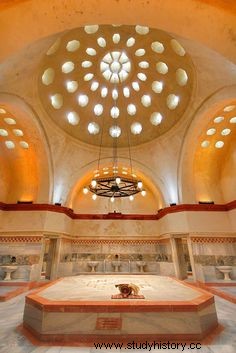
The chambers were covered by dome-shaped or vaulted ceilings, giving visitors views of the city skyline. Steam and hot rooms had their domes pierced with skylights or small holes. These holes served two functions - one, they provided natural lighting during the day, and two, excess steam escaped from the room through these holes. The walls and ceilings were built of vapor-proof materials such as marble or lacquered plaster. Out of the whole complex, the cloakroom or vestibule is usually one of the most decorated rooms. It often has a central fountain and benches. The Ottoman bathrooms had their wardrobes built with wooden galleries on several levels that took visitors to smaller wardrobes. Toilets were built in the complex. A majority of the historical hammams drew inspiration from the Roman heating system for the Holocaust. There was a service room (on a lower level than the steam rooms) behind the walls in the warm room where several stoves were located. Water was heated in the stoves and then delivered to the steam rooms. At the same time, smoke and hot air are produced, which is produced when the stoves are heated through pipes and pipes under the floor in the steam rooms, and thus the rooms are heated before they rise through walls and out of the chimneys. As long as the hammams remained open, there was a constant need for hot water, so the stoves were burned all the time. While wood was the primary material for fuel, the hammams in Damascus and Morocco used recycled materials from factories such as wood chips from workshops and olive pits from olive presses.
Services inside a Turkish bath
Hammam is built for both women and men. While some are built separately, others serve hammams for both women and men, but at separate times. On several occasions, the hammams are turned into places of entertainment (such as dancing and food) and ceremonies such as holidays, weddings, beauty tours and celebrations of the birth of a newborn.
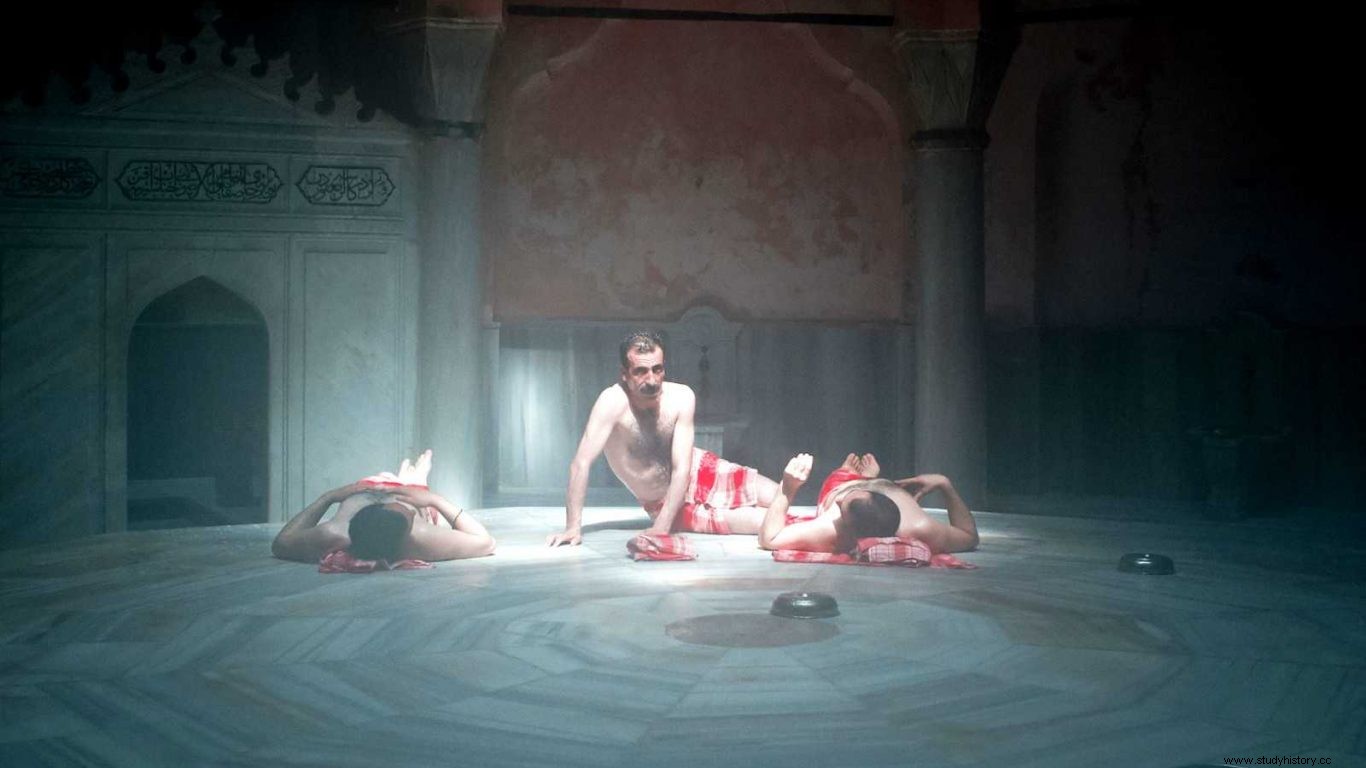
When you enter a Turkish bath, the first step is to undress in the wardrobe. Most Turkish baths make it common for visitors to cover the lower body with a loincloth. A pestle (a silk or cotton towel to cover the body) is included. By going from the cold room to the warm room, sweat is induced. The warm room can have several sections, such as the heated marble platforms and the water basin. After warming up and sweating in the warm room for about ten minutes, a companion (who matches the gender of the visitor) arrives to help wash and scrub the guest. The companion comes armed with soap and cheese (a mitten to scrub the skin) for a vigorous scrubbing. After scrubbing, the visitor is washed with water.
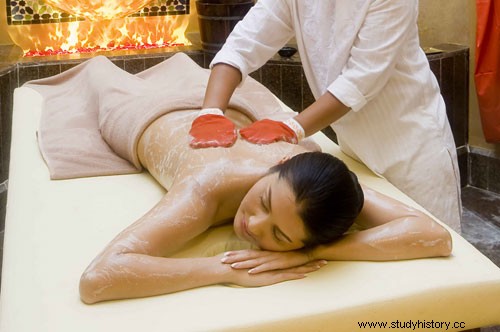
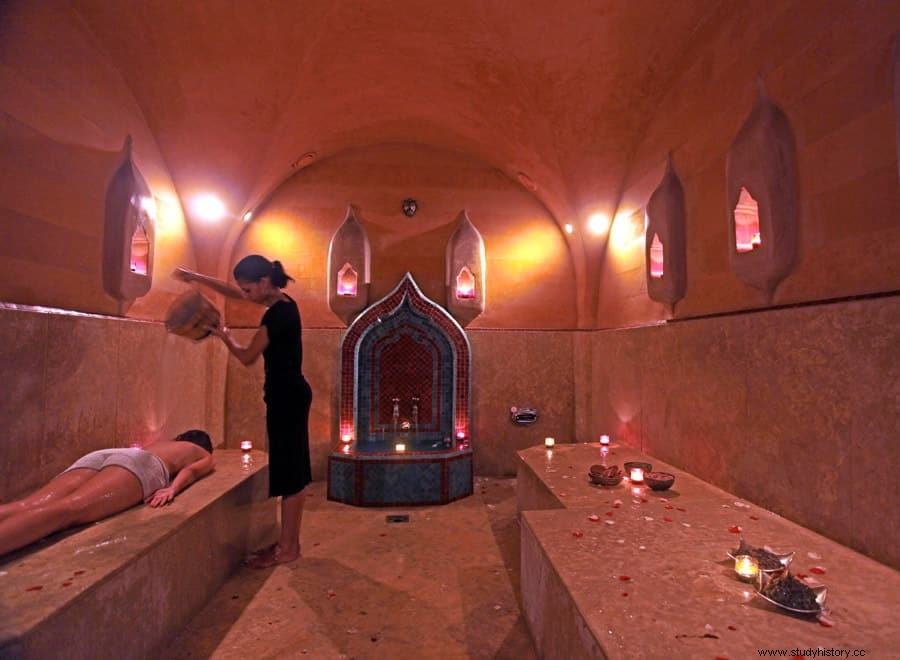
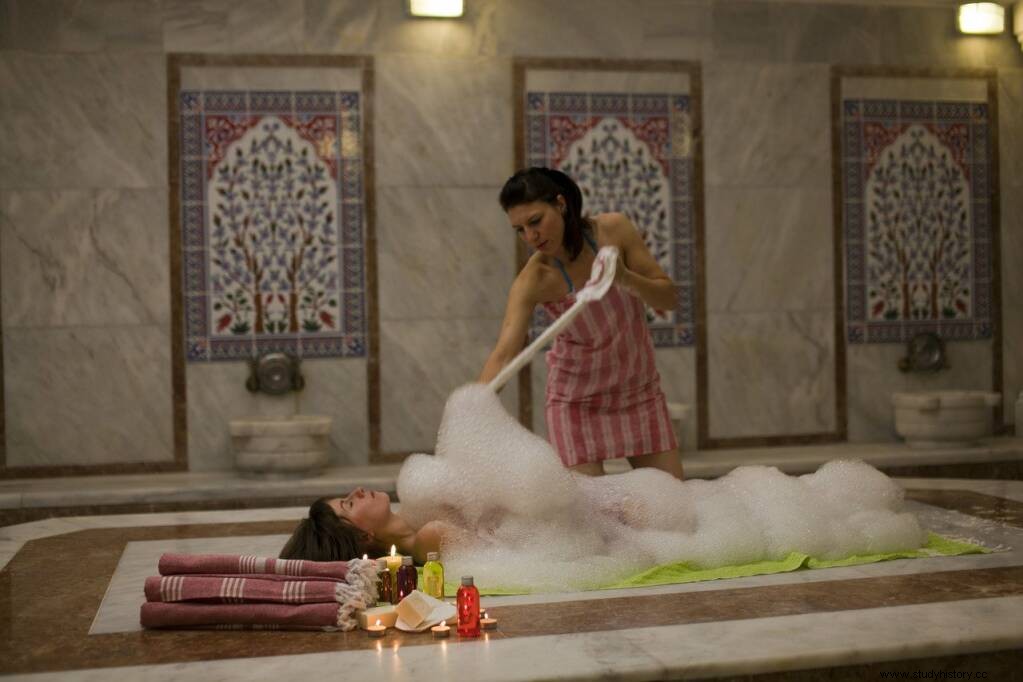

Until scrubbing and washing, all hammams operate according to the same principles. However, some variations occur depending on the location. While the whole process is over with the washing in many Turkish baths, others may have pools where the visitor can immerse themselves in water and relax for a while. There is a hot tub followed by a massage. A special cloth is foamed with soap that the companion will press over the visitor's body. They then continue with a gentle massage. After the skin care is finished, a hair wash comes. A quick shampoo is followed by a head massage. More water is poured on the head until it is completely clean. Although the whole ritual is performed, visitors can choose to stay a while longer in the salon just to relax and chat with the locals.
Modern hammams use various accessories from the Roman period. Some of these are peştemal, Nalin (clogs to avoid slipping on the floor), kese and often jewelry boxes, mirrors, henna buns, gilded soap boxes and perfume bottles.
The significance of the hammams in Islamic culture
In Islam, ablutions must be performed before prayer. There are two types of ablutions - ghusl, which is a cleansing for the whole body, and wudu, which means cleansing the face, hands and feet. Although there are areas offered by mosques for washing, the hammams located near the mosques are used by those who want to perform a full body wash. The hammams in Morocco especially used the Roman designs to adapt to the needs of Islamic purification. The hammams were built with pools for full immersion of the body. However, this led to questions about hygiene and many preferred to swim under running water.
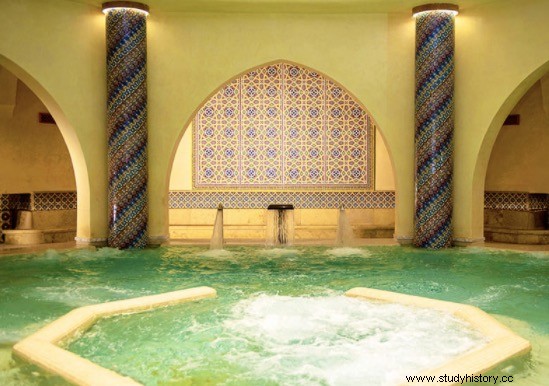
In Islam, the hammam has several functions. In addition to allowing for ablutions before prayer, it provided a place for general hygiene, social functions for society and as a meeting place for women and men. Conservative countries denied women the right to gather in public places to socialize. The hammams helped to reverse this. Women could gather away from the eyes of men and socialize. Thus, the hammams have achieved a prominent role in the lives of Muslim women as they provide privacy and some freedom. Since visitors are mostly naked inside the hammams, they also became a place for gender expression. In the early days when hammams became popular with the expansion of Muslim rule, many scholars criticized the use of public bathhouses. They claimed that the hammams could become the site of illegal sexual activities.
Hammam can be either privately owned or extensions of palaces and mansions. In many scenarios, they served as charitable institutions that were part of a much larger complex. Waqf agreements (involving donating a building, plot or other property to Muslim religious or charitable causes without the intention of recovering the property) govern these complexes and the hammams were a source of income for the maintenance of the complex and mosques.
Current scenario
Hammam is one of the best places to exemplify the religious and social sphere of a region. Although the roots of hammams lie in antiquity, modern hammams have evolved by integrating both traditional and modern aspects. While maintaining the authenticity of using similar techniques and products, modern luxury facilities are now used. Hammam in the modern era offers spa services from other cultures, such as customized hair treatments and facials. Today, Turkish bath is a mixture of the traditional and the modern.
